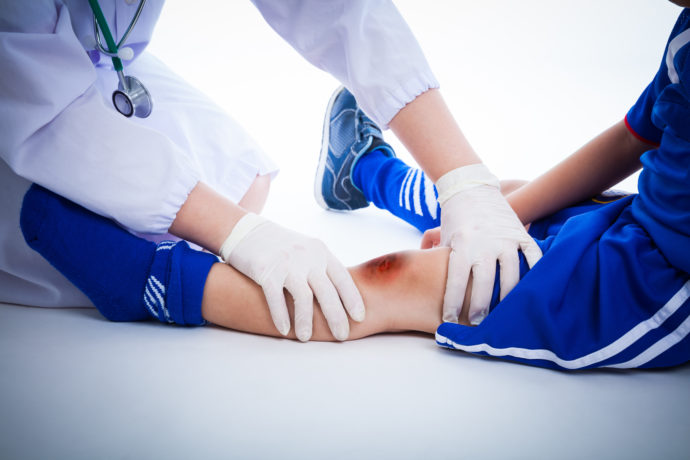As your kids are participating in various sports throughout the year, it is important to keep them safe. In the U.S., about 30 million children and teens participate in a sports organization of some kind, and there are over 3.5 million injuries reported each year.
Though some sports are more dangerous than others, all sports have the potential in resulting in injury. Children between the ages of 5 and 14 account for nearly 40% of all sports-related injuries.
Although 62% of organized sports-related injuries occur during practice, one-third of parents do not have their children take the same safety precautions at practice that they would during a game. According to the CDC, more than half of all sports injuries in children are preventable.
We spoke with Leading Sports Medicine Expert and Orthopedic Surgeon, Dr. Derek Ochai an orthopedic surgeon in Arlington, Va., who has been in practice for about 20 years, about what parents should do in case an injury occurs, how to recognize those symptoms and how they can prevent injuries. Check out what he had to say:
How can you differentiate between a major and minor injury?
- Minor injuries: Able to move the affected limb with minimal pain. Able to walk without a limp (in lower extremity injury). The pain dissipates in a few days. Pain completely relieved by over the counter pain medications.
- Major injuries: Pain with weight bearing. Pain moving the affected limb. Severe swelling. Pain awakening the person at night.
How should you respond to a critical injury situation?
- The Emergency Room is always a reasonable option. However, if it is an orthopaedic (arm or leg) issue and it is during the day, some practices can take emergency cases. If it is an Urgent, but not Emergent, situation, it may be worth it to call your local orthopaedic surgeon to see if you can get in (many times, patients can be seen and treated a lot quicker in the doctor’s office than in the ER). Also, these offices can sometimes help to guide you, to say whether it is something you need to go to the ER or not.
What are the most occurred injuries amongst youth?
- Among young children, non-displaced fractures are relatively common. Because young children have open growth plates in their bones, the bones have weak spots, which are susceptible to breaking. If older youth (teens), sprains are the most common (ligament injuries).
How to keep your child safe from injuries? Methods such as extra padding or safe under gear/helmets?
- For contact injuries, appropriate padding/gear is helpful. Also, having your children PRACTICE at team sports helps prevent injury, as getting more proficient in a sport helps decrease the likelihood of injury.
Which injuries are worth emergency room trips?
- Any head injury, especially if there is a loss of consciousness, dizziness, “ringing in the ears”, vision problems, or memory issues. Any chest trauma, especially with problems breathing. If it is an arm/leg issue, see answer 2.
How to reach when your child has a major injury?
- DON’T PANIC. If it is an arm/leg issue with a deformity, wrap it in a towel, or if you can make a makeshift splint to immobilize it, use that and then wrap it. Call your orthopaedic surgeon on the way to the ER (in case they direct you straight to the office). If it is a head or neck trauma and the child cannot get up, do not attempt to move them. Call 911 immediately and stay with the child.
Which sports are more injury prone?
- All sports are associated with injuries (they are a part of playing sports). In the US, sports most associated with injuries include soccer, basketball, football, gymnastics, cheer.
What sorts of basic first aid items are good to keep on hand in case of an injury?
- Band-Aids and ice pack (can be one that self-activates). Neosporin for minor abrasions/cuts. Athletic tape.
Find out how to ask the right questions to ensure your child stays safe.
Saron Messay is a contributing writer to Our Children Magazine.





